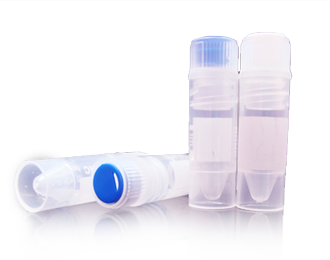Antibody
-
20411
Purified freeze-dried antibody to human type IV collagen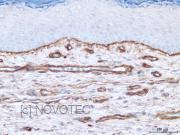
Human
Type IV collagenType IV collagen is a sheet-forming type of collagen found in basement membranes where it serves a critical scaffolding function. In mammals, six proteins make up the type IV collagen family with the distribution of family members being tissue-specific. Structurally, three collagen IV...
-
20421
Purified freeze-dried antibody to bovine type IV collagen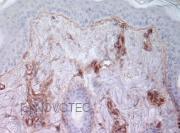
Bovine
Type IV collagenType IV collagen is a sheet-forming type of collagen found in basement membranes where it serves a critical scaffolding function. In mammals, six proteins make up the type IV collagen family with the distribution of family members being tissue-specific. Structurally, three collagen IV...
-
20441
Purified freeze-dried antibody to rat type IV collagen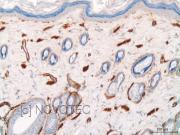
Rat
Type IV collagenType IV collagen is a sheet-forming type of collagen found in basement membranes where it serves a critical scaffolding function. In mammals, six proteins make up the type IV collagen family with the distribution of family members being tissue-specific. Structurally, three collagen IV...
-
20451
Purified freeze-dried antibody to mouse type IV collagen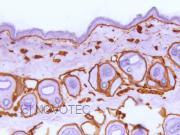
Mouse
Type IV collagenType IV collagen is a sheet-forming type of collagen found in basement membranes where it serves a critical scaffolding function. In mammals, six proteins make up the type IV collagen family with the distribution of family members being tissue-specific. Structurally, three collagen IV...
-
20491
Purified freeze-dried antibody to porcine type IV collagen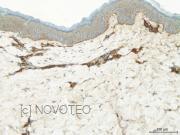
Porcine
Type IV collagenType IV collagen is a sheet-forming type of collagen found in basement membranes where it serves a critical scaffolding function. In mammals, six proteins make up the type IV collagen family with the distribution of family members being tissue-specific. Structurally, three collagen IV...
-
20511
Purified freeze-dried antibody to human type V collagen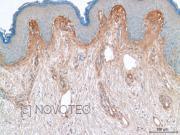
Human
Type V collagenType V collagen is a fibrillar collagen composed of α chains. Type V collagen is found in tissues containing type I collagen and appears to regulate the assembly of heterotypic fibers composed of both type I and type V collagen. This gene product is closely related to type XI...
-
20531
Purified freeze-dried antibody to chicken type V collagen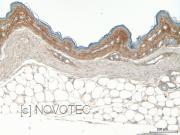
Chicken
Type V collagenType V collagen is a fibrillar collagen composed of α chains. Type V collagen is found in tissues containing type I collagen and appears to regulate the assembly of heterotypic fibers composed of both type I and type V collagen. This gene product is closely related to type XI...
-
20541
Purified freeze-dried antibody to rat type V collagen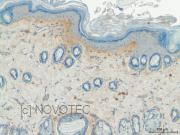
Rat
Type V collagenType V collagen belongs to the fibrillar collagens. Type V collagen is a quantitatively minor component in type I-collagen-containing extracellular matrices such as those of placenta, lung, skin and bone.
-
20611
Purified freeze-dried antibody to human type VI collagen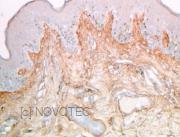
Human
Type VI collagenType VI Collagen is a major structural component of microfibrils. The basic structural unit of collagen VI is a heterotrimer of the alpha1(VI), alpha2(VI), and alpha3(VI) chains. Mutations in the genes that code for the collagen VI subunits result in the autosomal dominant disorder,...

